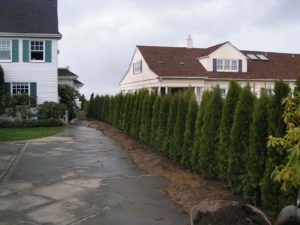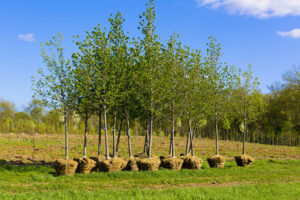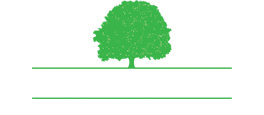Our goal is to manage all of your hedge & tree installations needs and be the only company you need to call to maintain and improve your property. One Email does it all! All of our tree services are Fully Insured, so you can enjoy peace of mind!

Hedge Installation
Our Installation or Replacement services include:
- Emerald Cedars, Pyramidal Cedars, Western Red Cedars, Boxwood's, Yews and laurels.
- From 3 feet to 12 feet tall. Bone Meal included in every Installation. ( 30 min order)

Tree Installation
We buy high quality products so you can have a Healthy tree forever
|
Preparing the soil before planting any hedge or tree?
Before planting a hedge & tree installations
It is important to identify the type of soil. Clay-based soils are rich in nutrients; however, they do not drain well, thereby increasing the risk of fungal disease. Clay-based soils may also be dry and difficult to moisten, causing the hedge to turn yellow. Conversely soil which is too sandy and nutrient-poor will drain too easily, another risk for dehydration and yellowing.
Each type of soil can be optimized for tree planting with by adding a specific blend of organic matter such as black soil, bone meal and/or compost. Note: many nurseries sell bags which mention '' black soil '', although they are actually peat from peat bogs. This substrate is not soil; it is an agglomerate of acid fibers free of organic nutrients and will not have the same benefits for your new hedge. It is preferable to incorporate true black soil or better still a quality compost. To prevent the roots from winding up and suffocating in the planting hole, it is important to mix the soil with the compost.
The planting hole should be one and a half times the depth of the root ball and twice the width of the potted clod in order to allow space for the roots and adequate drainage. Using a tiller will greatly facilitate the work. The collar of the cedar plant should be positioned level to or about half an inch (1.5 cm) lower than the surrounding soil to allow a slight accumulation of rainwater. This collar should not be buried to prevent the development of rot. When unloading, it is best to unroll the pile of roots at the edge of the pots to facilitate the spread of roots in the soil. Ensure that the soil in the planting hole is well-watered before placing your hedges or trees . Your expert will suggest tips for easy periodic watering, such as a drip hose. Watering is particularly important in the first year.
